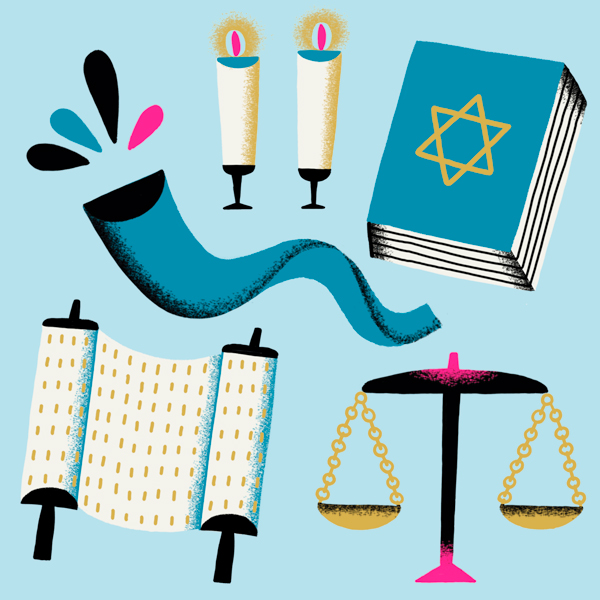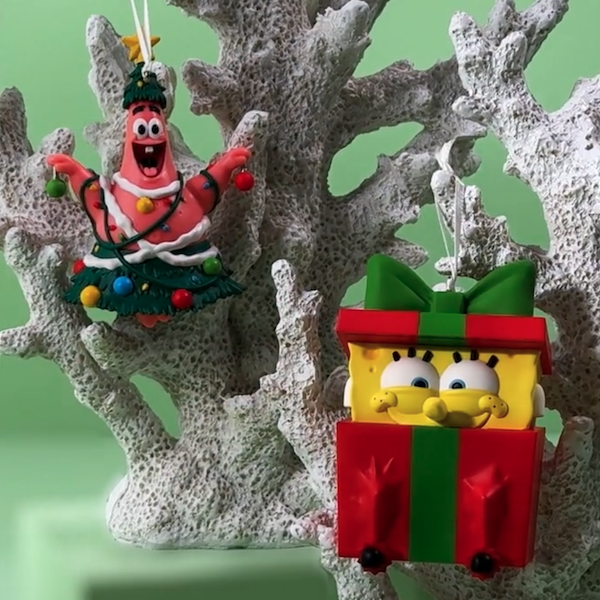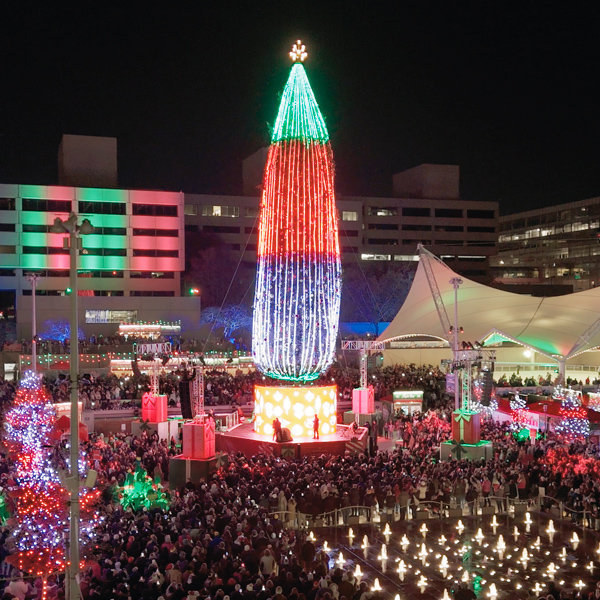What is Yom Kippur?

Yom Kippur is the most solemn day of the Jewish calendar. Also called the Day of Atonement, it is observed by many Jewish people with fasting, reflection and prayer.
If you’re looking to learn more about how Yom Kippur is observed, you’ll find a great introduction to this holy day below.
Inspired? Create and share by tagging @HallmarkStores.
The origins of Yom Kippur
According to Jewish scripture and tradition, the first Yom Kippur occurred in the time of Moses. After the leader of the Israelites first received the Ten Commandments from God, he found his people worshipping an idol and broke the stone tablets in anger. He returned to Mount Sinai to pray for God’s forgiveness on their behalf.
After 40 days of prayer, God granted them forgiveness and gave Moses a second set of commandments. Moses then descended the mountain and told the Israelites they were forgiven.
Rabbinic tradition states that the date Moses descended was Yom Kippur. It has since been recognized in the Torah as a holiday of forgiveness.
Yom Kippur and High Holy Days
In the Jewish faith, there are two dates known as High Holy Days—Rosh Hashanah (Jewish New Year) and Yom Kippur. The two days bookend a 10-day period known as the Days of Awe or the Days of Repentance, starting with Rosh Hashanah and ending with Yom Kippur.
After celebrating the beginning of the new year on Rosh Hashanah, the faithful pray, confess wrongdoings, seek forgiveness, give to charity and perform good deeds. This is the time in the Jewish calendar when it is said that God decides whose names will be inscribed in the Book of Life or the Book of Death. On Yom Kippur, their fates are sealed for the year.
When is Yom Kippur?
Yom Kippur occurs on the 10th day of Tishrei in the Hebrew calendar—in September or October of the Gregorian calendar—and falls on a different date each year.
Here is when Yom Kippur occurs for the next few years:
- Yom Kippur 2024: Sunset October 11 to nightfall October 12
- Yom Kippur 2025: Sunset October 1 to nightfall October 2
- Yom Kippur 2026: Sunset September 20 to nightfall September 21
Yom Kippur Laws and Customs
The Torah instructs Jewish adults—apart from the sick, elderly and new mothers—to abstain from eating and drinking between sundown on the evening before Yom Kippur and nightfall on Yom Kippur. The purpose of fasting is to deny physical pleasures and focus solely on one’s spiritual connection with God.
Additionally, the Torah instructs that observers refrain from bathing and washing, using cosmetic products like lotions and creams, wearing leather shoes and engaging in sexual intimacy.
Services
Five prayer services take place during Yom Kippur, the first on the eve of the holiday and the last before sunset on the following day. Those services are:
- Kol Nidrei – an evening service that marks the beginning of Yom Kippur
- Shacharit – an early morning service with a Torah reading
- Musaf – a second morning service with a Torah reading
- Mincha – an afternoon service with a Torah reading
- Neilah – a final service for Yom Kippur
Common prayers
Yom Kippur prayer services use a special prayer book known as the machzor. One of the most important prayers specific to Yom Kippur describes the atonement ritual performed by high priests during ancient times.
Which prayers are said depends on the service and identity of the participants. One prayer, called Viddui, means “confession” and is said right before Yom Kippur. It is repeated several times throughout the High Holy Day.
Rituals
Blowing the shofar—an instrument made from a ram’s horn—is central to Yom Kippur services. On Yom Kippur, a single long blast is sounded at the end of the final service to mark the end of the fast.
We hope that this article has helped you understand a little more about Yom Kippur. Whether you observe the High Holy Day or know someone who does, we appreciate the opportunity to share special holidays like this with you!
Looking for more ways to celebrate with the Jewish community? Check out these posts:
Shop Tree of Life
See allYou may also like
See more-
Valentine's Day Make little hearts happy this Valentine’s Day 💞
Nothing lights up a little one's face like letting them know just how much they're loved. Okay...except for when they...
-
Valentine's Day Valentine's Day gifts for him: 100+ ideas for the boyfriends, husbands, dads and sons in your life
Who’s ready for Valentine’s Day?! 🥰 We absolutely love this holiday and can’t think of a more perfect time to shower ...
-
Calendar Flip Spring Forward: March 2026 Holidays and Observances
Color us excited! From the wearin’ of the green and more sunny fun to colorful Holi festivals and celebrating crayons...
-
Calendar Flip Welcome a New Year: January 2026 Holidays and Observances
HAPPY NEW YEAR! If that hurt your head, you might have celebrated a little too much. When you’re feeling better, we h...
-
Calendar Flip Hello, Love: February 2026 Holidays and Observances
Let’s warm up this cold month with love and connections. From valentine cards to dressing up your pet, this month has...
-
Christmas Christmas gift wrap ideas to match your holiday personality
If you’re anything like me, the holiday season can make you tap into different sides of yourself. Maybe you become th...
-
Gifting 60+ Peanuts® Snoopy gifts to help fans channel their favorite beagle
It was a dark and stormy night in the winter of 2015. I was 17 years old, overwhelmed with AP classes, senior-year st...
-
Christmas 3 Christmas kids craft ideas, plus activities for even more easy holiday fun
From decorating the house to baking cookies, the Christmas season gives us so many opportunities to get creative and ...
-
Christmas The best Christmas gift idea: Bikini Bottom BFFs
Got a bestie who's as silly as you? Or one who's there through all of life's storms with a smile? Then we think this ...
-
Christmas Which Disney Pixar character is your favorite? 🤔
Thankfully, with so many beloved Disney Pixar character Keepsake Ornaments, you won't have to choose a favorite this ...
-
Christmas Not having Cher on your tree? As if! 💅
If you're a Millennial, we predict you will be majorly, totally, butt crazy in love with this Clueless Keepsake Ornam...
-
Christmas 20 vintage Christmas ideas to turn up the charm this holiday season
When I think of my perfect Christmas, vintage vibes are always what come to mind first. Santa’s sleigh in a dreamy wi...
-
Christmas 20+ ideas to help you plan your trip to the Hallmark Christmas Experience
Ever wanted to step inside of a picture-perfect Hallmark Christmas movie? Or travel to a place where you could immers...
-
Christmas Sit fireside with the cutest snowfolks around!
A campfire might seem like the least likely place to find a few snowmen hanging out, but if it's cold enough, even th...
-
Christmas With so much magic, we can’t choose a favorite!
Every Keepsake Ornament is magical, but our ornaments with light, sound and music are in a class all their own. From ...
-
Christmas Stocking stuffer ideas for literally everyone on your list
The stocking stuffer struggle is real. By the time you’ve bought your main presents, you feel like you’re all out of ...
-
Christmas You love Keepsake Ornaments…we love rewarding you! 🥳
Collecting Keepsake Ornaments isn't just a hobby for you—it's a passion! And that kind of enthusiasm is something we ...
-
Christmas 60+ Christmas decorating ideas to deck your halls—and every other space!
If you’re searching for Christmas decorating ideas to make all your spaces extra jolly and put you in a merry mood, y...
-
Christmas Dance your way to Christmas morning 🦛🎄
Keep little ones giggling and grooving all holiday break-long with this musical dancing Christmas hippo plush! Does i...
-
Winter Lean into the Season: winter ideas to make the season bright and extra cozy
There are two types of people in this world: those who love winter and those who’d endure an eternity of wearing wet ...





















